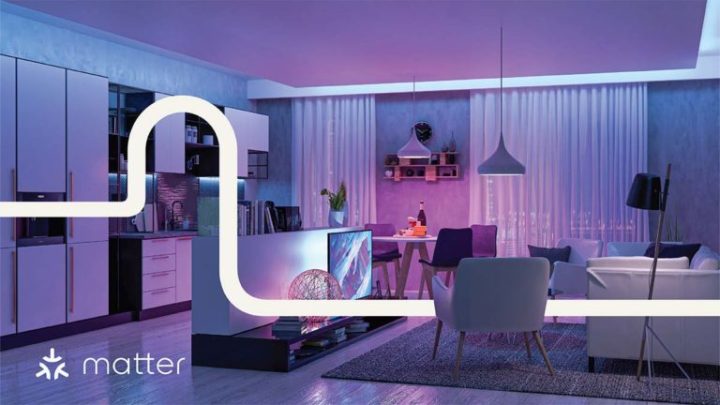An ambitious new smart home networking standard is on the horizon. It’s called Matter, and it promises to make connections between your various smart lights, speakers, TVs, cameras, and sensors more stable and seamless. Thread, a new wireless format that will play nice with Matter, has been percolating up through a number of products in anticipation, but it’s still far from ubiquitous. For those looking to haul their home into the future, is it worth holding out until Matter is released before loading up on gear?
What is Matter?
Matter is a way for your home devices to talk to one another. It’s built as a kind of mesh network, so that communication doesn’t rely on a single central node like a Wi-Fi router. This helps deal with range issues in larger homes, but also provides flexibility for devices that come and go. If one device leaves, alternate paths of communication are quickly established through a variety of IP-based networks. Thread networks still require what is called a border router in order to orchestrate their connections, but instead of separate hardware, this function is bundled in with some devices. For a deeper dive, be sure to read our explanation of how Matter works.
What’s the difference between Matter and Thread?
Thread is one of the main underlying technologies upon which the Matter standard is built. It’s not the only one, mind you. Tried-and-true Wi-Fi and Ethernet will also be involved in connecting Matter devices together, while Bluetooth can help with initial connections and as a backstop. Matter’s role is to act as a common networking foundation for the connected home platforms we know, such as Google Home and Apple HomeKit. With this shared foundation, devices from multiple manufacturers can talk to one another with minimal fuss.
Why would I want Matter devices in the home?
The main reason to be interested in Matter at home is interoperability. If you have smart home devices from multiple manufacturers, and phones, tablets, and PCs from an equally diverse range, it’s not always a given that they’ll be able to all play nicely together. In theory, Matter should provide more consistency despite the wide range of platforms at play. Thread, though separate from Matter, should provide longer-range access to low-power devices that aren’t plugged into an outlet. The regenerating mesh network should also provide a more stable connection thanks to extra redundancies.

When is Matter going to be available?
The Matter standard has been released, so now it’s on manufacturers to implement it.
So, should I wait on buying new devices until Matter is live?
Since we’ve only just entered into the fall, it should be a short wait until Matter is fully made live. This is, of course, assuming the Connectivity Standards Alliance actually sticks to its timeline. It has bumped the date back in the past, so another delay isn’t totally out of the question. While some manufacturers have been getting an early start on supporting Matter, it’s still going to be a few years before it’s everywhere. Google, Samsung, Apple, and plenty of other big players are on board with Matter, so at the very least, we can expect devices from those manufacturers to support it. Among other device brands, we can expect gradual, widespread adoption following their lead. It’s likely not going to be an opening of floodgates when Matter’s launch day happens.
So go ahead and buy your smart devices now. Software updates may make them Matter-compatible over Wi-Fi in the future, and next-gen models that support Thread are likely still a ways out. If you’re really keen on future-proofing, take a look at some of the best Thread-supporting smart home devices that are already available.
Editors' Recommendations
- I checked out Govee’s new AI smart lights and now I want them everywhere
- Nanoleaf upgrades its music-syncing skills, launches new lighting products at CES 2024
- Samsung goes all-in with AI, reveals several new smart home appliances at CES 2024
- Ikea launching 3 new smart home safety gadgets in 2024
- Matter adds support for fridges, air purifiers, robot vacuums, and more with massive 1.2 update




